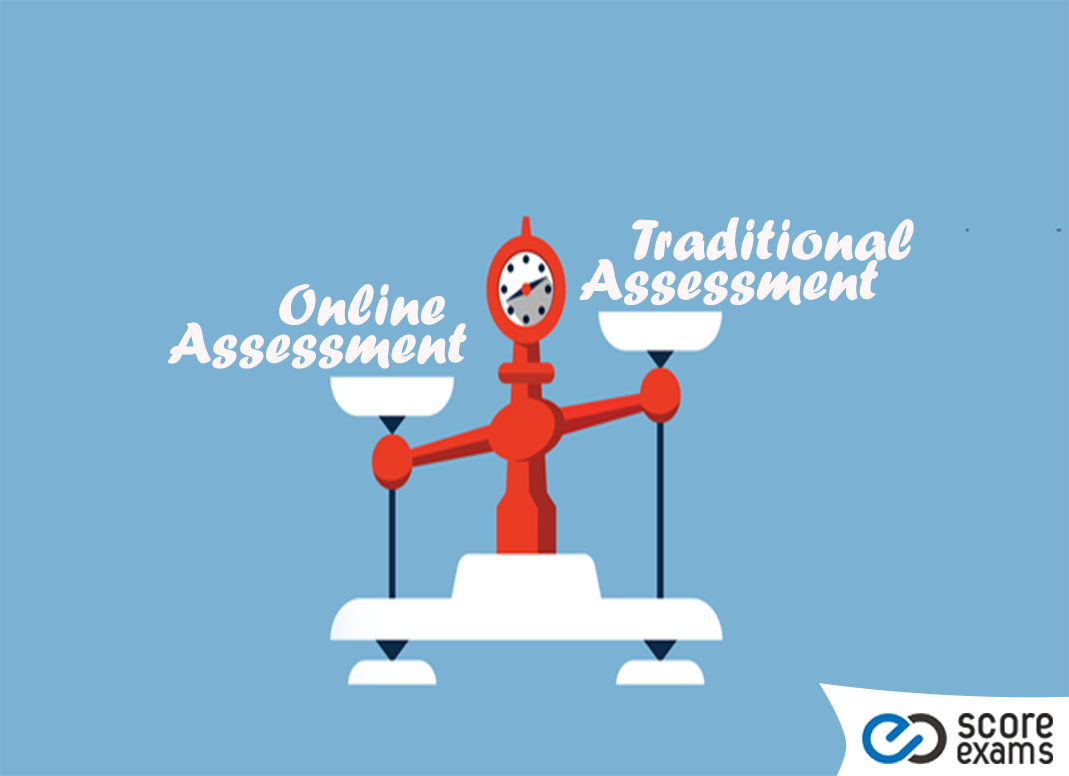
TRADITIONAL ASSESSMENT VS ONLINE ASSESSMENT
Assessment is one of the crucial components of learning. People within the educational community, i.e. policymakers, educators, students, parents, administrators, have different ideas regarding the implementation of assessment strategies. While some believe traditional assessment methods are more effective, others think that online assessment tools are superior.
?
Assessment is defined as ?any method used to better understand the current knowledge that a student possesses?. For a long time, student learning was measured only by testing in traditional school settings. Currently, it is realized that this is not only way of gathering information about student learning. Furthermore, testing is seen as only one part of assessment and a broader concept of assessment is being widely used.
The most commonly used traditional assessment methods are multiple-choice tests, true/false tests, short answers and essays.??
True/false tests: True/false items require students to make a decision and find out which of two potential responses is true. Since they are easy to score, it is easy to administer true/false tests. However, guessing might increase the chance of success by 50%. Especially, when the test item is false, it is quite hard to find out whether the student really knows the correct response. One possible solution is to ask student to provide with an explanation for the incorrect item, or rewrite the statement correctly.
Multiple-choice tests: Multiple-choice tests are commonly utilized by teachers, schools, and assessment organizations for the following reasons:??
1. They are fast, easy, and economical to score. In fact, they can be evaluated by a computer.
2. They can be scored objectively and thus may give the test appearance of being fairer and/or more reliable than subjectively scored tests.
3. They reduce the chances of learners guessing the correct items in comparison to true-false items.?
Essays: Essays are effective assessment tools since the questions are flexible and assess the higher order learning skills. However, they are not very practical due to the fact that it is very difficult and time consuming to score the essays. Moreover, subjectivity might be an issue in scoring.
Short-answer tests: In short-answer tests ?items are written either as a direct question requiring the learner fill in a word or phrase or as statements in which a space has been left blank for a brief written answer?. The questions need to be precise, otherwise the items that are open to interpretations allow learners to fill in the blanks with any possible answers.
?
Disadvantages of traditional assessment:
?Fails to take into account students' growth and development and inhibit their progress.
Educators try to accurately summarize students' achievement with simple letter grades and a few words of condensed commentary.
Evaluation of students' higher-order thinking skills, problem solving, attitudes, and other abilities cannot be quantified easily.
Traditional assessment does not involve discussions, classroom projects, and other programs designed to show material to students and impart knowledge that the teachers can then observe and measure.
Traditional ways of testing can sample only a fraction of what we want to produce and plays a judgmental role rather than a developmental one.
Summative and usually designed and administered by people outside the learning process.
Takes a lot of teaching time and are very often not followed up as a basis for future teaching.
Provision of discriminative numerical marks, useless descriptions rather than the provision of formative feedback.
Teacher-centered.
Limited time frames; Gives the learner only one chance to show competence.
Not individualized and cannot be tailored to the needs of individual learners.
?
What is online assessment?
?It is the use of information technology in various forms of assessment such as educational assessment, health assessment, psychiatric assessment, and psychological assessment. This may utilize an online computer connected to a network.
Online assessment guidelines:
?Develop the learners' independent study skills.
?Promote educational dialogue between the lecturer and student.?
?Help identify and deal with students' misconceptions.?
?Give direction to learning in key subject areas.
?Relate learning to student work and experiences.?
?Permit students to assess their progress.
Provide fair, valid and reliable assessment.
Provide feedback about strengths and weaknesses of the study materials.?
?
Benefits of online assessment:
The use of online assessments saves an organisation a lot of time and money.
The assessments can be completed in less time.
Multiple candidates can complete the online assessment at the same time and there is no need for specialized personnel.
Test takers are able to take the assessment during class, or at home, using their own devices. They get to see their results and answers and get instant feedback about their chosen topic. That helps the researcher, recruiter, teacher or trainer to learn more about their users and adapt to their needs, strengths and weaknesses.
?
?There are pros and cons of both types of assessments. A balanced approach between traditional and alternative assessment is critical. While deciding what assessment strategy to use, instructors need to consider the issues such as content, context, audience. Having clearly defined the objectives, appropriate assessment tools need to be utilized. Depending on the nature of the instruction, a combination of both assessment techniques might be useful.? Although some financial investment in online assessment software is needed, we believe the benefits outweigh the costs by far.
??
Personalized Learning
Previous PostWill CBSE Class X have two versions?
Next Post





